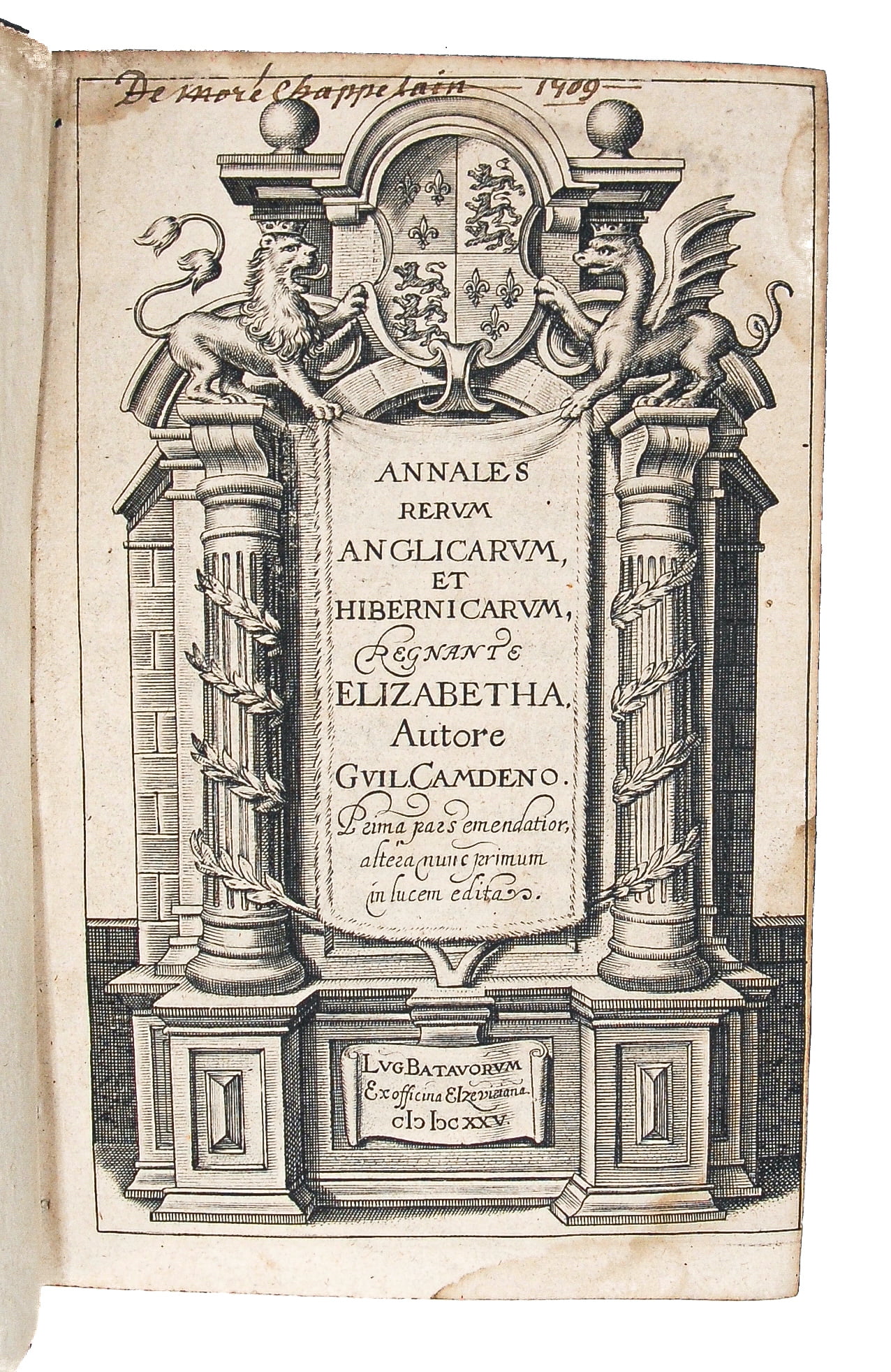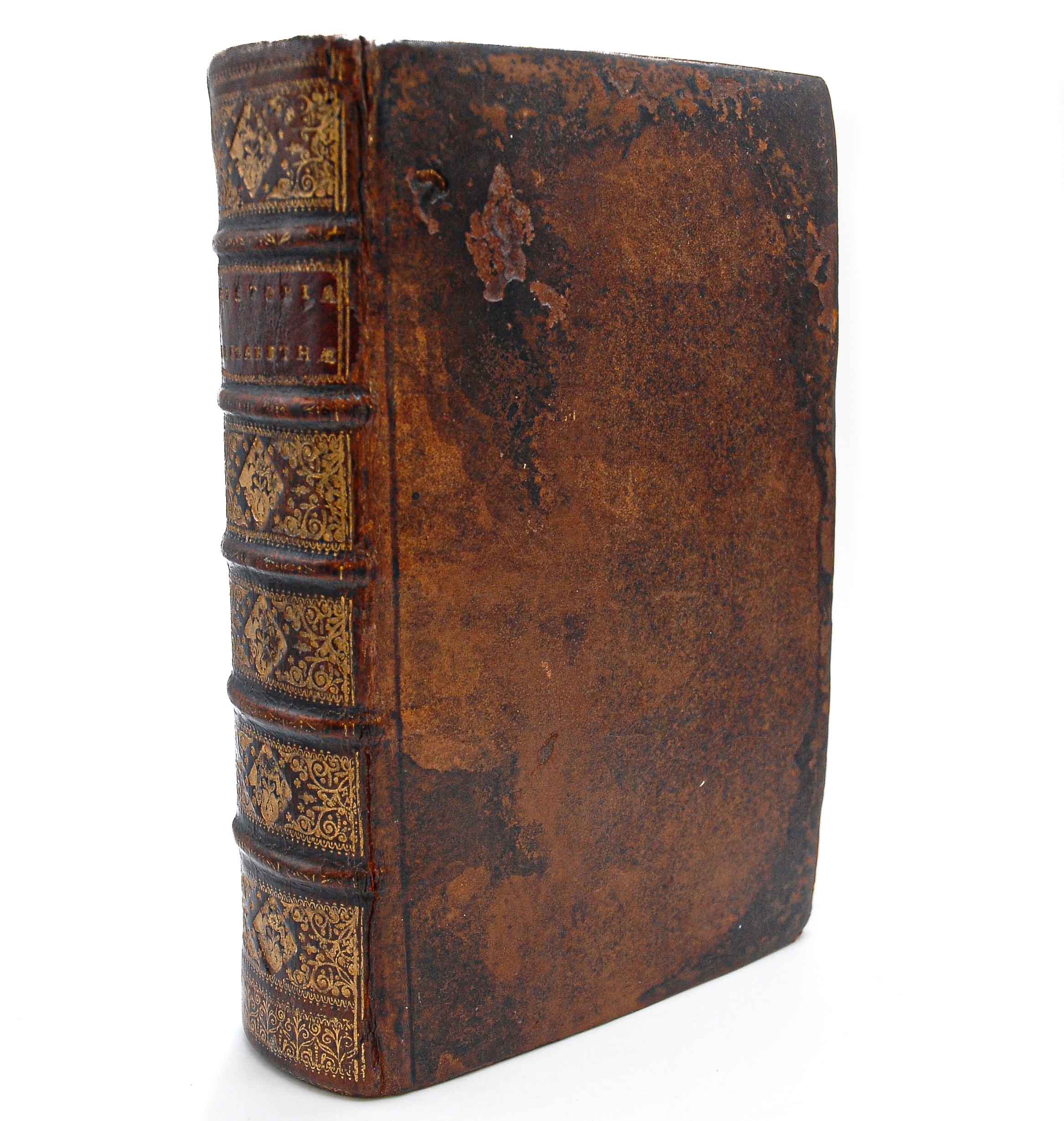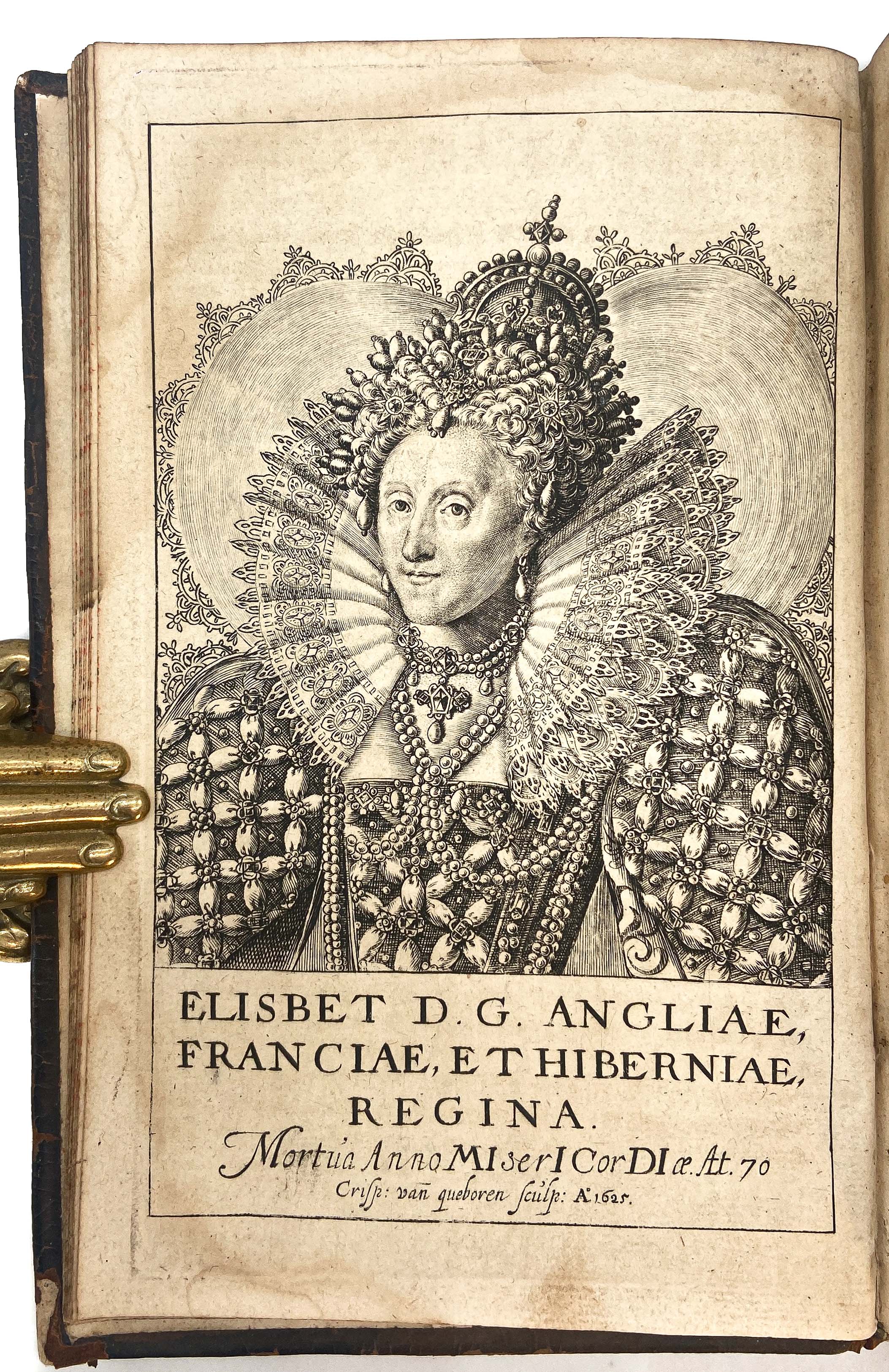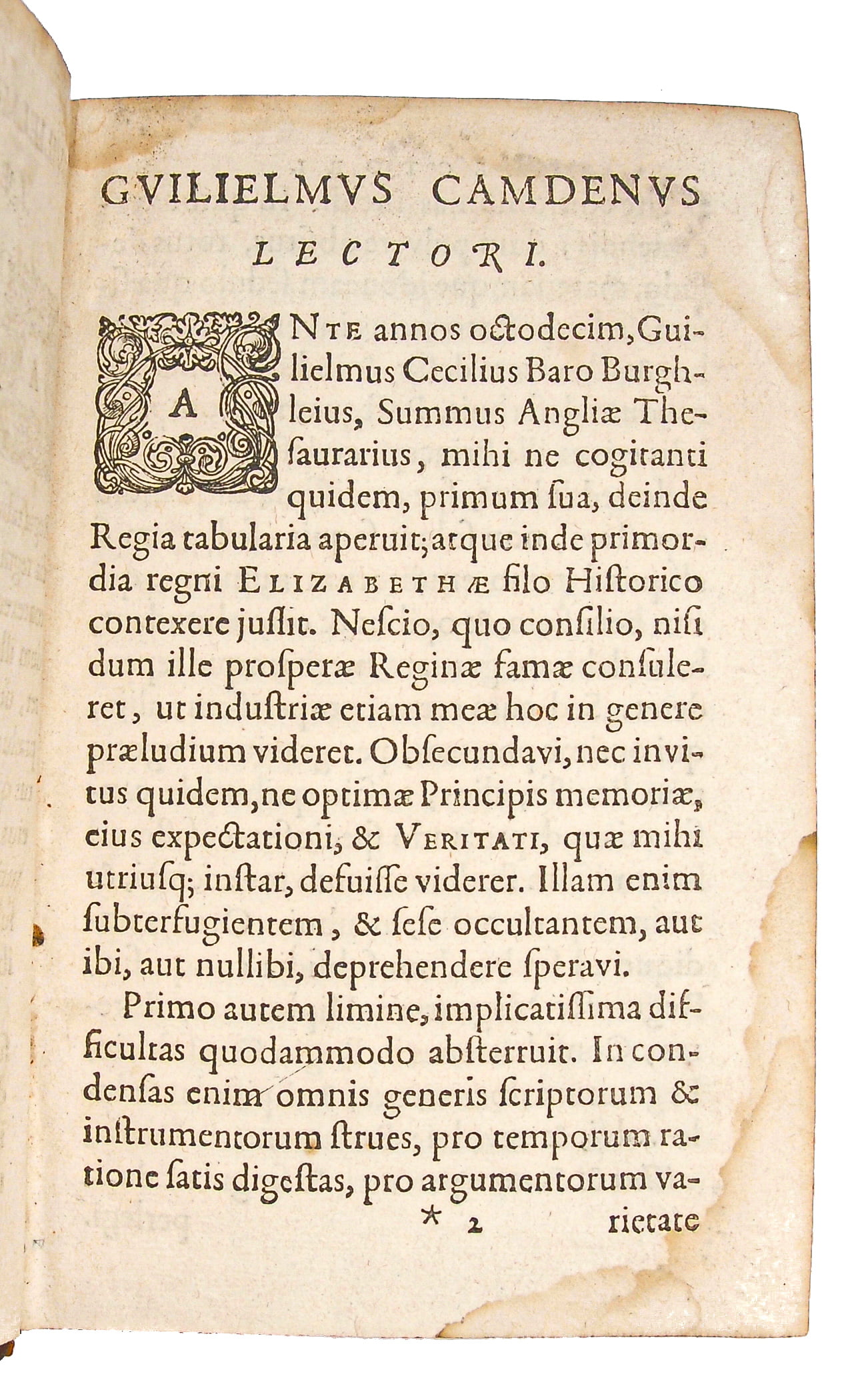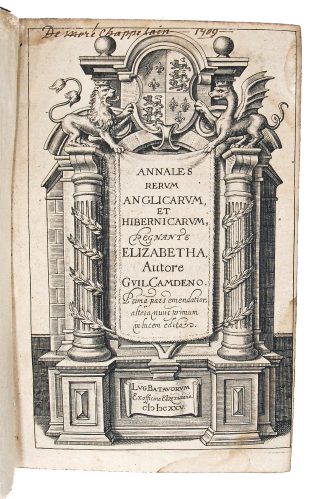CAMDEN, William.
Annales Rerum Anglicarum, et Hibernicarum, regnante Elizabetha.
Leiden, ex Officina Elzeviriana, 1625£1,500.00
FIRST COMPLETE EDITION. 8vo. Pp. (xxx) 856 (xx). Roman letter. Engraved architectural tp border with royal arms, ornamental initials and exquisite full page engraved portrait of Elizabeth I by Crispin van Queboren. Bookplate to pastedown of Robert J. Hayhurst, autograph Delamson De Louebere to fep, below pencil description of engravings, autograph ‘Demoré Chappelain 1709’ to tp. Light age yellowing, water stain to lower outer corner and upper inner gutter of first ten leaves and a few later ones. A good clean copy in contemp. calf, repaired, wear at corners and small hole to covers, spine gilt with red morocco label, all edges speckled.
First complete edition of this ground-breaking study of the reign of Elizabeth I. Parts 1-3 had been published in 1615, and Part 4, covering the years 1589-1603 in 1625. In the present edition they combine for the first time and form the first full-scale history of Elizabeth’s reign. They were enormously influential in how the queen was perceived in later times. Camden composed his annals in a deliberately classical style and form; he desired to emulate the historiography of Polybius and Tactius, writing in a manner which assessed “Why, How, and To what end, things have been done, and Whether the thing done hath succeeded according to Reason; and all that remains will be an idle Sport and Foolery, than a profitable Instruction: and thought for the present it may delight, for the future it cannot profit” (Camden, The Authour to the Reader, Annales). This approach to the study of history is in many ways similar to Francis Bacon; as both valued state affairs as the most important and chief of subjects, a Tacitean approach.
The work was suggested to Camden by William Cecil, 1st Baron Burghley. Camden’s sources, at least those that he explicitly mentions, are the ex-Chancellor of the Exchequer, John Fortescue, and Henry Cuffe, the secretary of Robert Devereux, 2nd Earl of Essex. The events are not written in a continuous narrative, but instead in an antiquated style where events of each year are provided in separate entries. Events are allegedly spun in order to encourage a pro-Elizabeth perspective, and indeed the work is credited with propagating the influential myth of Elizabeth as a protestant heroine. What is often accepted as Elizabeth’s own words are actually Camden’s paraphrases of conversations and speeches, and some critics state he altered his account in order to placate James I, describing events like the dealings with Mary, Queen of Scots in a biased fashion. Not only an important source on Elizabeth herself, the work provide detailed information on contemporaneous events in Scotland, Ireland, and wider Europe as well as socio-economic issues, political affairs and disputes, military conflicts and geographical exploration.
Particularly desirable is the attractive full page engraving of the queen by the Dutch painter and engraver, Crispin van Queborn (1604-1652). He produced a number of engravings of various English and Dutch royalty.
Brunet Vol I 1511; Willem 227; This ed. not in Lowndes.In stock


